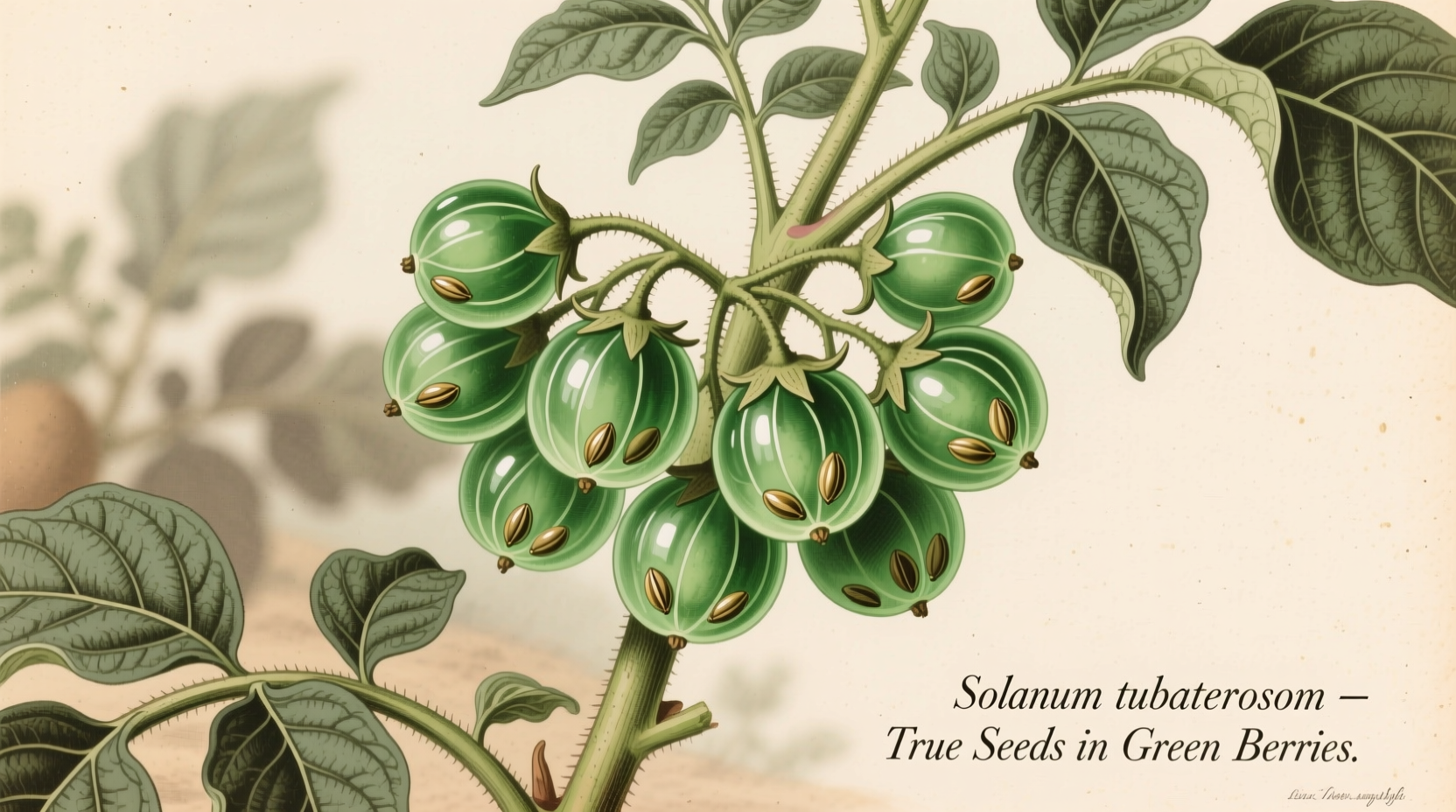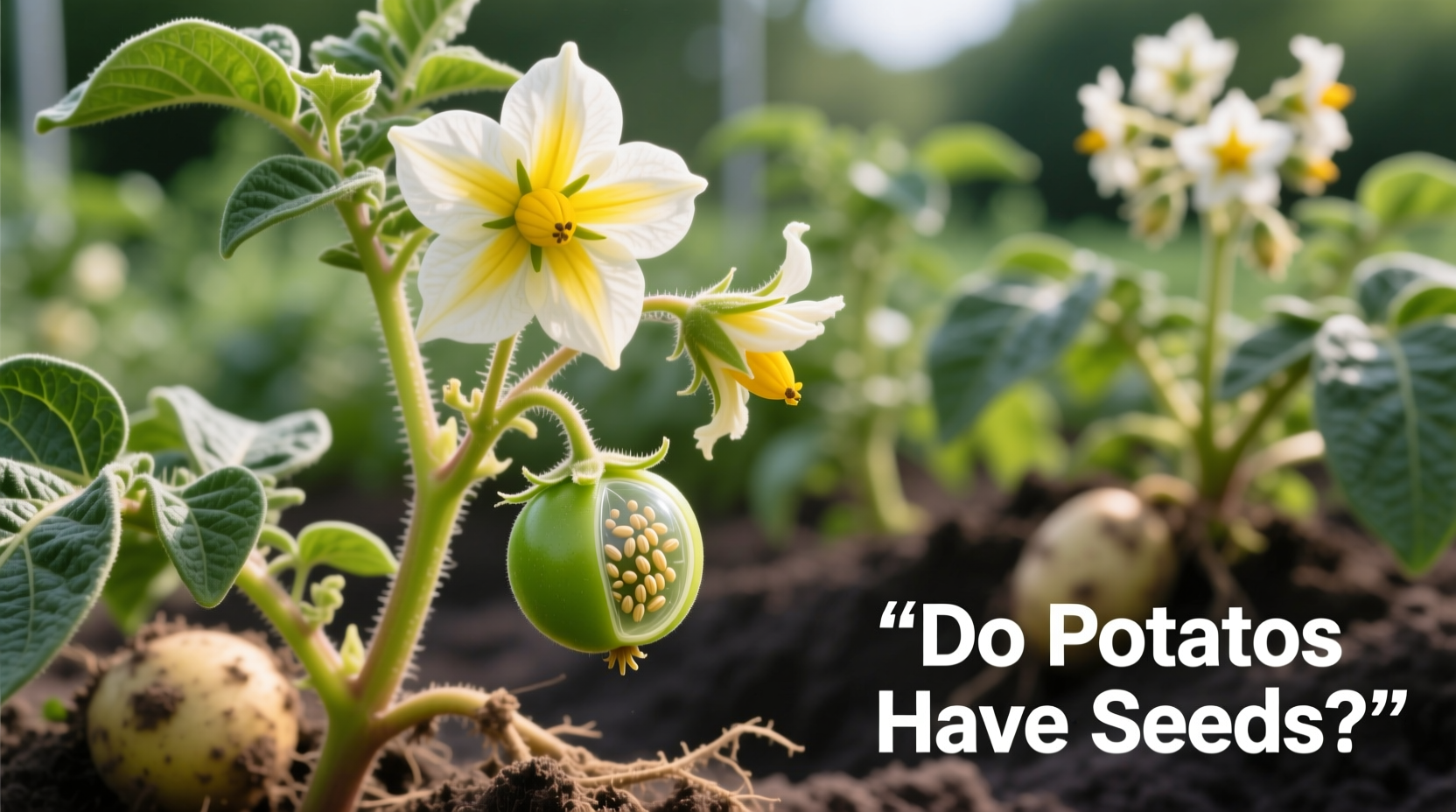Ever wondered why you've never spotted seeds on the potatoes in your pantry? You're not alone. This common question reveals a fascinating botanical truth that challenges our everyday assumptions about one of the world's most important food crops. Understanding potato reproduction isn't just academic—it directly impacts how farmers grow this staple food and how gardeners can successfully cultivate their own harvest.
Botanical Reality: How Potatoes Actually Produce Seeds
Contrary to popular belief, potato plants (Solanum tuberosum) are flowering plants that do produce true seeds. After blooming, healthy potato plants develop small, round, green berries that resemble cherry tomatoes. These berries contain dozens of tiny, disc-shaped seeds that are the plant's actual reproductive material.
"Many people are surprised to learn that potatoes produce seeds because we never encounter them in grocery stores," explains Dr. Maria Rodriguez, a plant geneticist at the International Potato Center. "The seeds develop in berries that form after the plant flowers, but these berries are rarely seen in commercial production since they're removed to direct the plant's energy toward tuber development."

Why We Don't Use Potato Seeds for Commercial Production
Despite producing viable seeds, the global potato industry relies almost exclusively on vegetative propagation using tubers. This practice dates back to the crop's domestication in the Andes mountains over 7,000 years ago. There are several compelling reasons why seed potatoes (tubers) have become the standard:
- Genetic consistency: True seeds produce genetically diverse offspring, while tubers create clones of the parent plant
- Faster harvest: Tubers produce mature crops in 70-120 days versus 120-180 days for seed-grown plants
- Higher yield: Tubers typically produce larger harvests in the first growing season
- Disease management: Seed certification programs help control pathogens that could be transmitted through true seeds
Potato Seeds vs. Seed Potatoes: Key Differences
| Characteristic | True Potato Seeds | Seed Potatoes (Tubers) |
|---|---|---|
| Origin | Develop in berries after flowering | Modified underground stems |
| Genetic Variation | High (unique offspring) | None (exact clones) |
| Time to Maturity | 120-180 days | 70-120 days |
| Commercial Use | Rare (mainly breeding programs) | 99% of global production |
| Disease Risk | Higher (seed-borne pathogens) | Controlled through certification |
When True Potato Seeds Matter: Breeding and Research Applications
While commercial growers avoid true seeds, plant breeders rely on them for developing new potato varieties. The International Potato Center in Peru maintains the world's largest collection of potato genetic resources, using true seeds to create varieties with improved disease resistance, nutritional content, and climate adaptability.
According to research from the USDA Agricultural Research Service, "True potato seed (TPS) systems offer significant advantages for developing countries where transporting heavy tubers is difficult. TPS can reduce seed costs by up to 90% and eliminate the risk of tuber-borne diseases during transport." (USDA ARS)
Practical Implications for Home Gardeners
If you're growing potatoes at home, understanding this distinction prevents common mistakes. When garden centers sell "seed potatoes," they're offering disease-free tubers specifically for planting—not actual seeds. Using grocery store potatoes can introduce diseases to your garden, as they're often treated to prevent sprouting.
For adventurous gardeners, growing potatoes from true seeds is possible but requires patience:
- Collect ripe berries when they turn yellow-green
- Ferment the seeds in water for 2-3 days to remove gel coating
- Plant seeds indoors 8-10 weeks before last frost
- Expect variable results as each plant will differ genetically
"Growing potatoes from true seeds is primarily for breeding purposes or preserving heirloom varieties," notes Dr. Elena Martinez of Cornell University's Horticulture Department. "For reliable harvests, certified seed potatoes remain the best choice for home gardeners."
Why This Dual Reproduction Strategy Evolved
Botanists believe potatoes developed this dual reproduction strategy as an evolutionary advantage. In their native Andean habitat, true seeds allow genetic diversity to adapt to changing conditions, while tubers provide a reliable way to survive harsh conditions and quickly colonize favorable areas.
This biological flexibility explains why potatoes have become one of the world's most widely grown crops, thriving from the high Andes to temperate regions worldwide. Understanding this reproductive complexity helps us appreciate why potatoes remain a dietary staple for over a billion people.











 浙公网安备
33010002000092号
浙公网安备
33010002000092号 浙B2-20120091-4
浙B2-20120091-4